How will these resources help you?
At first, land becoming desert does not strike students as one of the largest threats to mankind. However, these resources show the devastating impact on the different scales that the threat of desertification poses. They offer student-friendly explanations of the causes, as well as the impacts across a range of countries, supported with map evidence for students to build case studies on. Solutions are explored and their success evaluated, so that students are well equipped to tackle questions on the assessment of management techniques of this growing threat. Activism is also encouraged, and these resources provide you with a broad evidence base to demonstrate the causes, impacts and possible solutions.
Desertification: The devastating impacts of desertification on regions across the globe and the challenges of addressing it
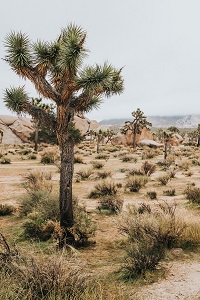
What is desertification and why is it happening?
published by Tufts University, BIO 7: Digital Storytelling, Group 17, (2020)
This resource is an excellent starting point for both teachers and students, with a range of interactive tools for students to work on an independent enquiry on desertification. It begins by explaining the problem and the process of desertification, and then continues to its main content on the effects. Here, a range of case studies are explored, with an interactive mapping tool and embedded video clips. Case studies include Mexico, China and the Sahel region of Africa. It ends by exploring solutions such as the Great Green Wall, and how students can help at an individual level, encouraging activism.
Consequences of Desertification
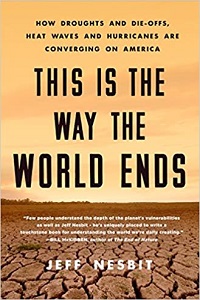
This Is the Way the World Ends: How Droughts and Die-offs, Heat Waves and Hurricanes Are Converging on America
by Jeff Nesbit, published by Thomas Dunne Books, (2018), 9781250160461
This harrowing book emphasises that human-induced climate change is leading us fast to the point of no return for the planet. We now have a small window to act, with the writer stating that ‘we have solved problems in the past and can do it again’. This book aims to bring home the stark realities of the problems that will lead us to act, otherwise the planet awaits a dire future, and this is linked closely to desertification throughout the book. The writer focuses on droughts in the Middle East, desertification in China and Africa, and intense heat waves in Australia. These all lead to rebellions, starvation, and migration. Extracts from this book are ideal for explaining to students the importance of desertification and its threat to humanity.
Tackling desertification
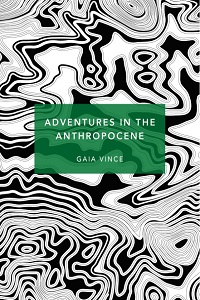
Adventures in the Anthropocene: A Journey to the Heart of the Planet we Made
by Gaia Vince, published by Penguin Books, Vintage Classics, (2019), 9781784873615
This book is a must-read for all Geography teachers, and the perfect starting point when investigating our threatened ecosystems. Chapter 6 is designated to deserts and the following chapters on the savannah and rainforests are also directly relevant, as is the prior chapter on farmland. The narrative is that we are entering a new geological epoch, from the Holocene to the Anthropocene, and that in this new era we are doing irreversible damage. Population expansion and intensive farming are to blame as the writer explores the effects on tribespeople near Lake Turkana in Kenya. The book follows the efforts individuals and communities make to stop this, although these are small scale (as in this case), and while ingenious, are often low impact. This is therefore highly suited to any GCSE or A-Level syllabus, as all have a large Living World unit.
Is the Great Green Wall working?
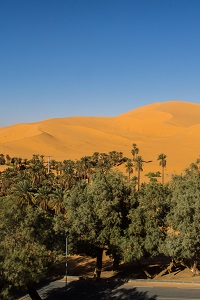
The Great Green Wall: Implementation status & way ahead to 2030
published by United Nations Convention to Combat Desertification, (2020)
This resource is an assessment of the progress of the Great Green Wall, the high-profile strategy to tackling desertification across Africa. The report starts with a useful and accessible overview of the issues that the region faces by way of land degradation, before moving onto an explanation of the project and the need for funding. Page 51 onwards provides very useful country data, with a map, a summary of the issues faced, and progress made on the wall along with its scope to reduce desertification. This is useful for students to be able to assess management strategies for this growing problem, as well as the barriers faced in different environments.
Audiovisual clip
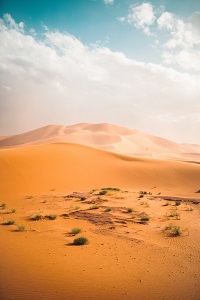
Curriculum Bites - Drought in the Sahel
published by BBC, (2007)
This clip visually explains how desertification happens.
Further materials
Desertification by GoodPlanet Foundation, directed by Yann Arthus-Bertrand, YouTube, (2011)
Watch this video
The Man Who Stopped The Desert by Kramer Culture Club, written, filmed and produced by Mark Dodd, YouTube, (2020)
Watch this video
David Newell is Head of Geography at Millais School in Horsham, West Sussex. He has held the GA’s Secondary Geography Quality Mark since 2015, and has worked as a Specialist Leader in Education, advising schools on improving their Geography provision.
Text © David Newell, 2022.
Text © David Newell, 2022.



